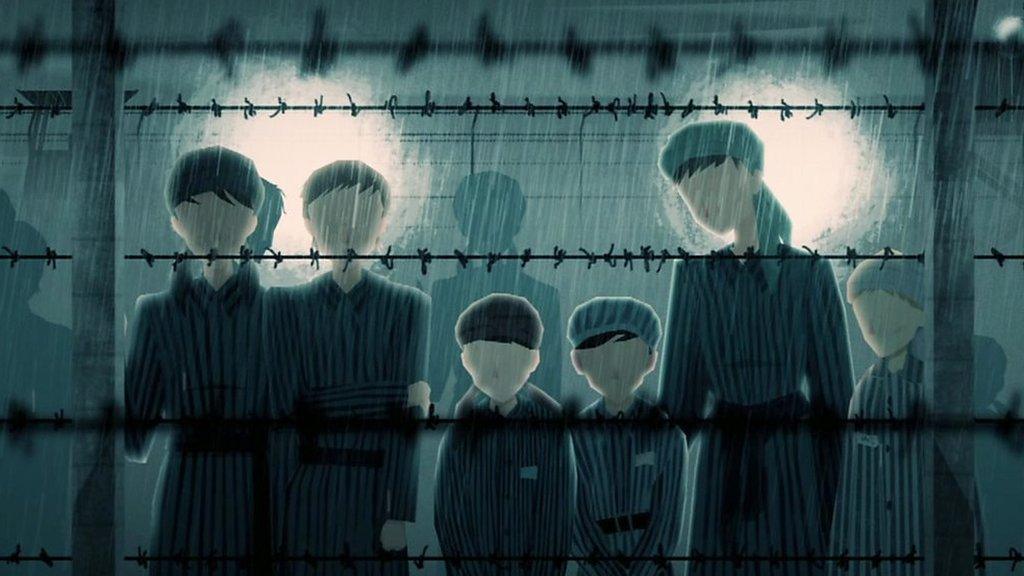What was the Holocaust?
- Published
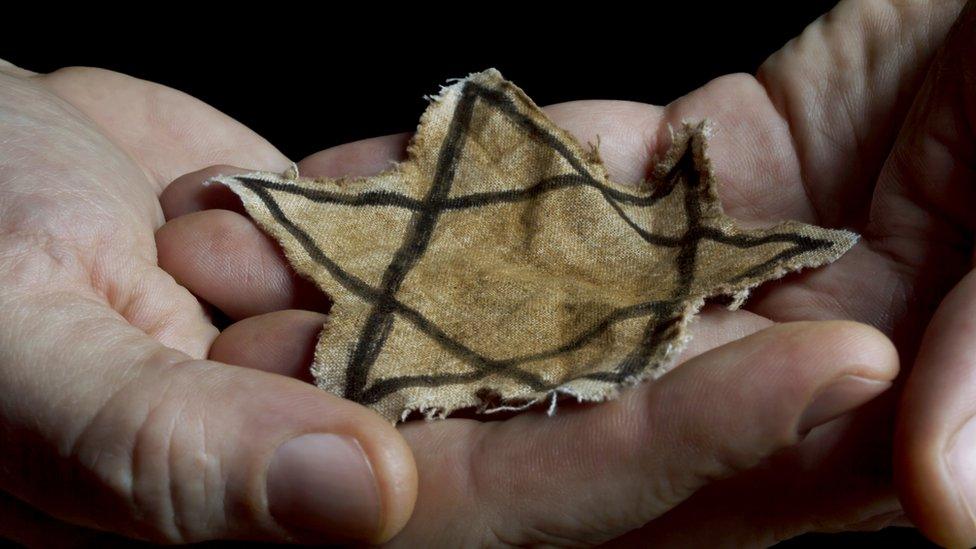
The Holocaust was a period in history during which millions of Jewish people (who Nazis identified using a Star of David, as seen in this picture) and other people were killed because of their identity
Holocaust Memorial Day is marked every year on 27 January.
It's when people from all over the world remember the millions of Jewish people, and people from other backgrounds, who were killed by the Nazis during World War Two.
It is held on this date because this is when the largest Nazi concentration camp, Auschwitz-Birkenau, was liberated - or freed - in 1945. This year is important as it marks the 80th anniversary of that liberation.
Holocaust Memorial Day is an important way to make sure the Holocaust is not forgotten and to try and prevent something like it ever happen again.
The event is also used to remember other victims of genocide from countries around the world.
Many events are taking place to commemorate the 80th anniversary, with special lessons and assemblies in lots of schools, workshops, ceremonies and talks from some of the survivors of the Holocaust.
What was the Holocaust?
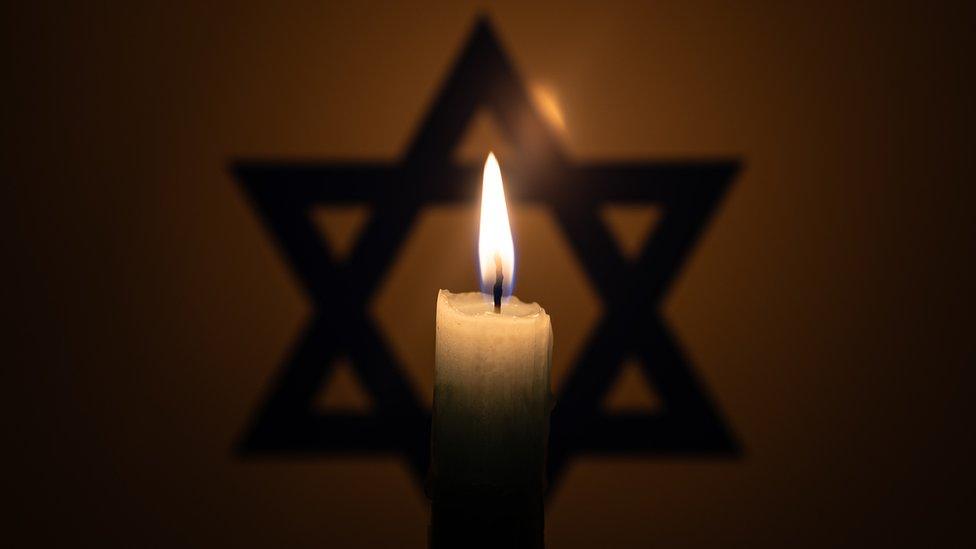
The Holocaust was a period in history at the time of World War Two (1939-1945), when millions of Jewish people, and people from other backgrounds, were murdered because of who they were.
The killings were organised by Germany's Nazi party, led by Adolf Hitler.
Jews were the main target of the Nazis, and the greatest number of victims of the Holocaust were Jewish.
Nearly seven out of every 10 Jews in Europe were murdered because of their identity.
Ricky hears two stories from Holocaust survivors
The Nazis also killed other groups of people, including Roma and disabled people.
They arrested and took away the rights of other groups, like gay people and the Nazis' political opponents. Many of them died as a result of their treatment.
The Holocaust was an example of something called genocide.
Genocide is the deliberate killing a large group of people, usually because they are a certain nationality, race or religion, with the aim of destroying that group.
Who were the Nazis?
Nazi is the shortened name for the National Socialist German Workers' Party (NSDAP).
The Nazi party was a political party in Germany established in 1919 after World War One.
It grew in popularity throughout the 1920s as the country struggled with the fall-out of World War One.
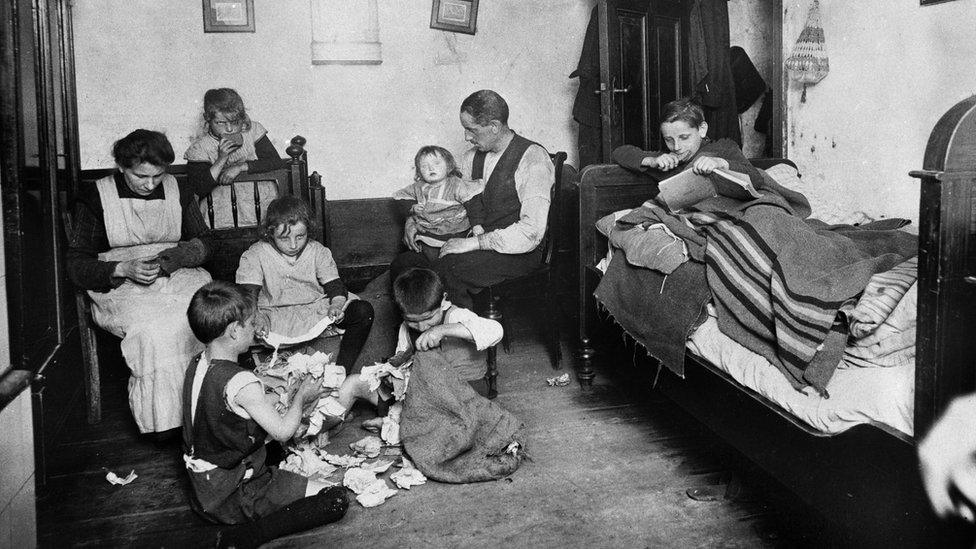
This picture shows a poor family living in cramped conditions in Berlin during the 1920s
Nazis were racist and believed that what they called their Aryan race was more important than others.
The Nazis said an Aryan was somebody Germanic. The Nazis believed that Jews, Roma, black people and other ethnic groups were inferior to Aryans.
Nazis were ruthlessly anti-semitic, and this affected all of their policies and actions.
They also believed that Germany was a better country than others and their people's superiority meant they could and should dominate other people.
This led Germany to invade and take over other countries before and during World War Two.
Who was Adolf Hitler?
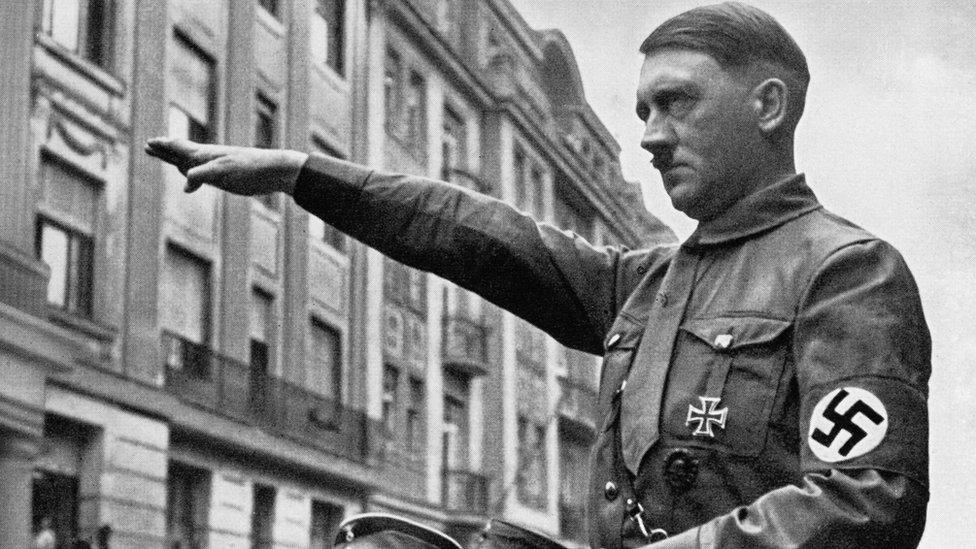
Adolf Hitler set out to impose Nazi values on all aspects of German life
In 1921, a man called Adolf Hitler became leader of the Nazi party.
Then, in January 1933, the Nazis were invited to form a government after they were voted as the largest party in an election.
From the moment his party came to power, Adolf Hitler set out to impose Nazi values on all aspects of German life, taking control using fear and terror.
When the German President Hindenburg died in 1934, Hitler declared himself to be the Fuhrer or 'supreme leader of Germany'. (Nowadays, the word Fuhrer has a negative meaning of a ruthless leader who imposes brutal rule over people.)
The three most important things to Hitler and the Nazis were:
The purity of the Aryan race
The greatness of Germany
Idolising the Fuhrer, Adolf Hitler
The party used lots of propaganda to persuade people to support them. They held big gatherings called rallies, and loudspeakers in public places shouted out Nazi messages.
Propaganda is the spreading of biased or misleading information to promote a political cause or a particular opinion.
What was the Holocaust?
The Holocaust was a process that started with discrimination against Jewish people, and ended with millions of people being killed because of who they were. It was a process that became increasingly brutal over time.
Nazi persecution
From the moment they came to power in 1933, the Nazis persecuted people who they didn't think were worthy members of society - most notably Jewish people.
They introduced laws that discriminated against them and took away their rights. Jewish people were not allowed in certain places and were banned from getting certain jobs.
Discrimination is when a person is treated unfairly because of who they are or characteristics that they have - for example, because of their religion, their race or whether they are a boy or a girl.
They also began to set up concentration camps where they could send people they believed to be "enemies of the state" to be imprisoned and forced to work. This included Jewish people and anybody who did not support the Nazis.
The first camp called Dachau was opened in March 1933 just outside of Munich.
Between 1933 and 1945, the Nazis created more than 40,000 camps in areas they controlled.
Some were work camps, some were transit camps to process prisoners, and others - the first of which would open in 1941 - would be extermination camps, where the Nazis could kill people in great numbers.
Many people were murdered by camp guards for no reason and many others died as a result of the terrible conditions in the camps.
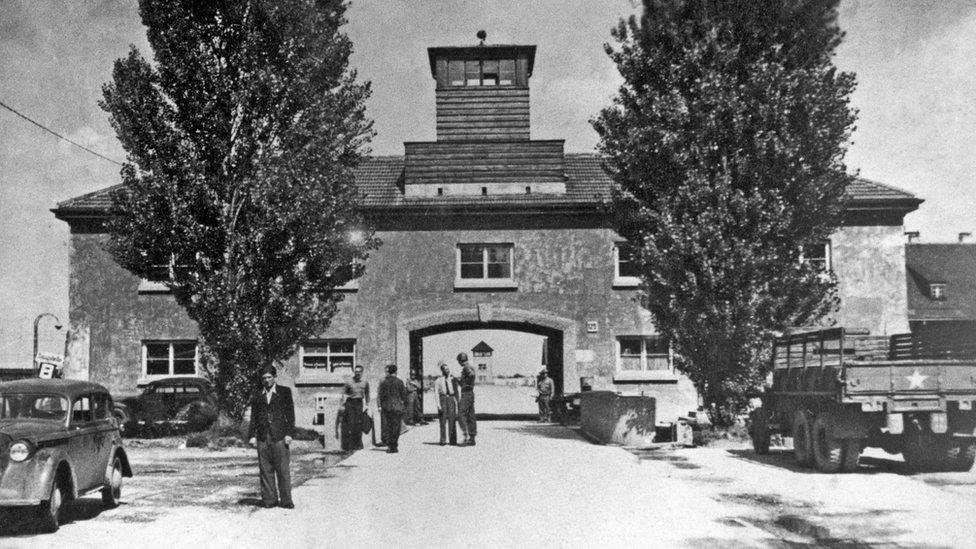
This picture shows the outside of part of Dachau concentration camp
The Nazis also set out to take control of everybody's lives.
In 1934, a law was introduced, which made it a crime to tell an anti-Nazi joke.
Jazz music was banned, textbooks were rewritten to contain Nazi ideas, pictures of Hitler were put up everywhere, and books were destroyed that were not written in ways that the Nazis liked.
In 1935, 1,600 newspapers were closed down and the ones left were only allowed to print articles approved of by the Nazis.
They set up compulsory groups for young people called Hitler Youth (for boys) and BDM (for girls), so they would become young Nazis who idolised Hitler as they grew up. Boys were taught Nazi values and prepared for war; girls were taught skills like cookery and sewing.
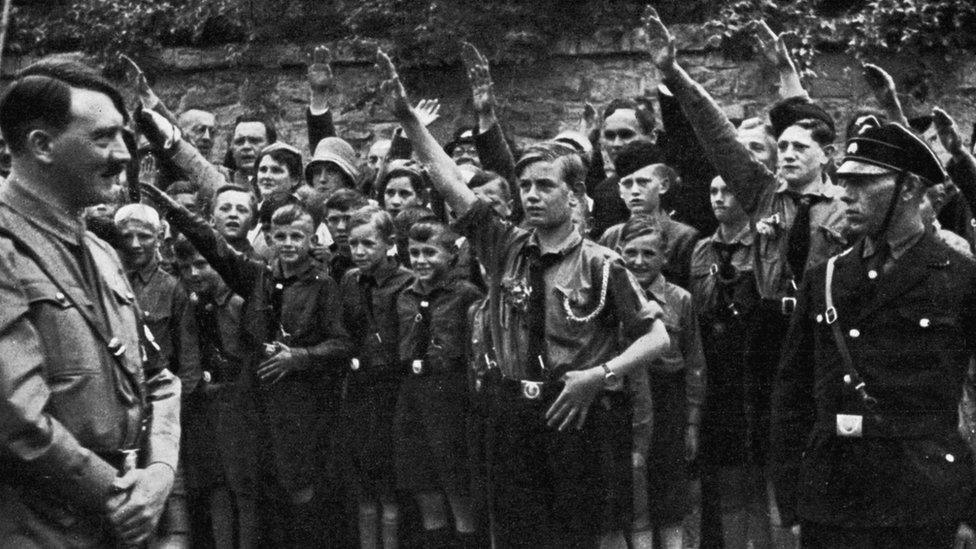
Here, we can see Hitler surveying a group of young Nazi supporters
Kristallnacht and the murder of millions
An important date was 9 November 1938, when there was a night of terrible violence against Jewish people.
It became known as Kristallnacht - the 'night of broken glass' - due to all of the smashed glass that covered the streets from shops that were raided.
Ninety-one Jews were murdered, 30,000 were arrested and sent to concentration camps, and 267 synagogues were destroyed.
On 1 September 1939, Germany invaded in Poland which marked the start of World War Two.
Jewish people in Poland were forced to live in selected areas called ghettos where they were treated very poorly and many were murdered.
Conditions in the ghettos were very bad, and many lost their lives as a result of disease and starvation.
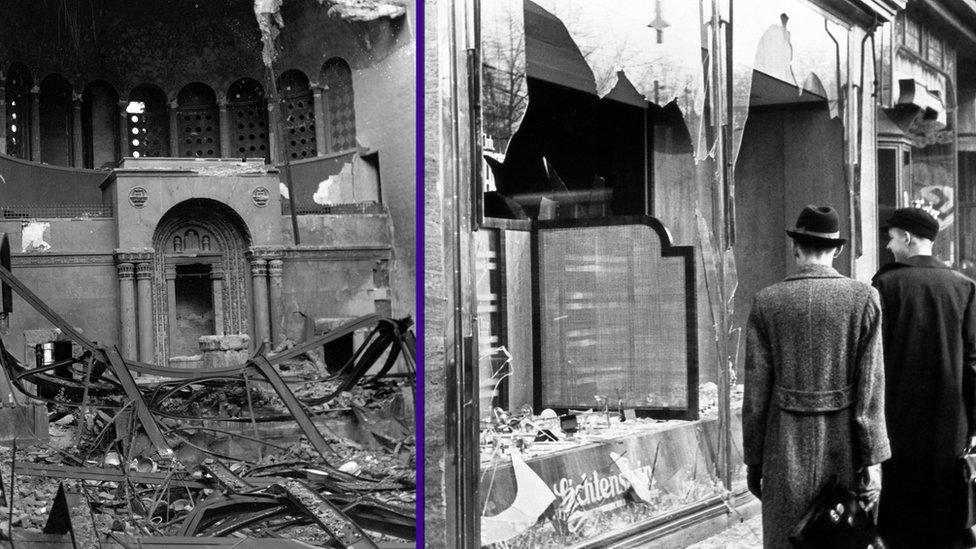
During Kristallnacht, synagogues were destroyed (picture on the left) and shop windows were smashed (as seen on the right)
By the early 1940s, the Nazis were looking for a way they could kill a great number people in a short amount of time in order to destroy Europe's Jewish population.
They came up with the idea of extermination camps in which they could kill lots of people. This is what they would call 'the final solution'.
By the end of 1941, the first extermination camp called Chelmno in Poland had been set up.
There were six extermination camps in total in areas of Poland controlled by the Nazis: Auschwitz-Birkenau (the largest), Belzec, Chelmno, Majdanek, Sobibor and Treblinka.
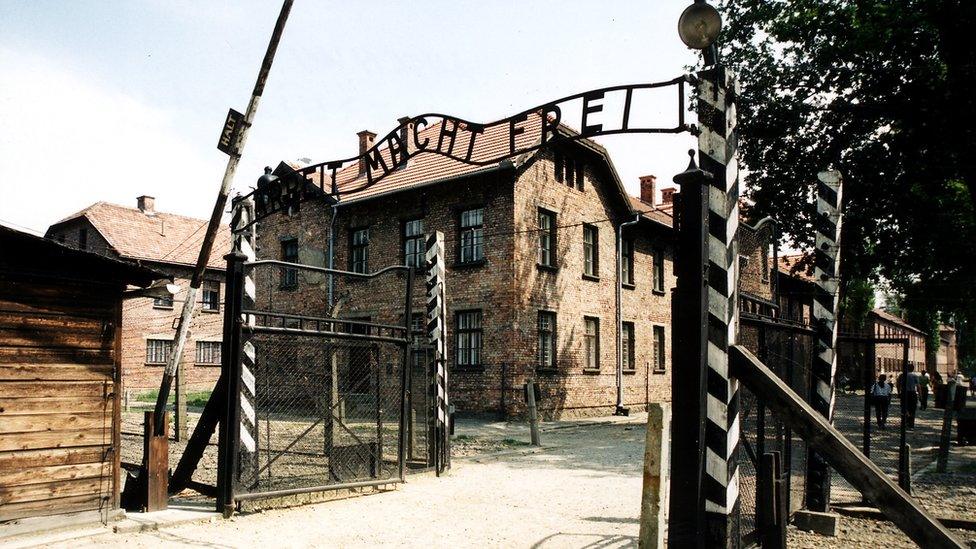
A famous gate at the Auschwitz camp reads 'Arbeit macht frei', which means 'work sets you free' in German
Camps were also established outside of Poland (in Belarus, Serbia, Ukraine and Croatia) by Nazis and their allies, where many hundreds of thousands more died.
Between 1941 and 1945, people were murdered on a scale that the world had never seen before.
Millions were rounded up and put on trains to the camps, where they would be forced to work or killed.
Many groups of people were involved in carrying out the Holocaust. There were two Nazi groups in particular which organised the killing of Nazi "enemies", but Nazis also relied on informants to tell them what people were up to. The German army also played a role to in enforcing the Nazis' brutal rule.
The SS: The SS was a military-style group of Nazis, founded in 1925, who were like Hitler's personal bodyguards. They were in charge of overseeing the killing of people in the camps. Part of the SS called the Einsatzgruppen were put in charge of killing many people, before the extermination camps were opened to carry this out on a much greater scale. The SS also took control of intelligence, security and the police force.
The Gestapo: Established in 1933, the Gestapo were the secret state police. This group were in charge of rounding people up to send them to the camps.
Who was killed or persecuted in the Holocaust?
We know that the victims included:
Jewish people
Roma and Sinti people
Slavic people, especially in the Soviet Union, Poland and Yugoslavia
Disabled people
Gay people
Black people
Jehovah's Witnesses
Political opponents
How did the Holocaust end?
As soldiers fighting against Germany in World War Two - Britain, the US, the Soviet Union and their allies - made their way across areas of Europe controlled by the Nazis, they began to discover the camps.
As it became clear that the Nazis were going to be defeated, the Nazis tried to hide the evidence of their crimes by destroying the camps.
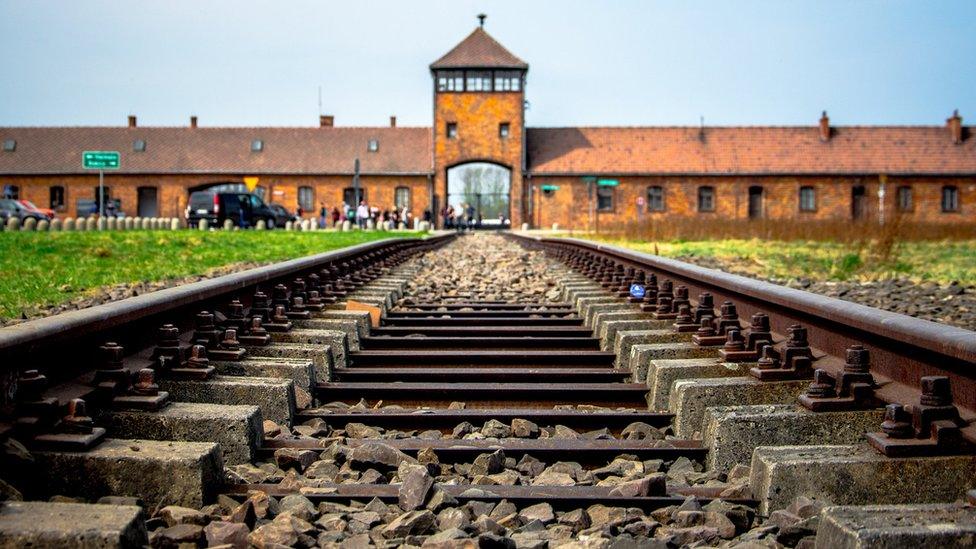
The Nazis tried to hide the evidence of what they had done in the camps
They forced surviving prisoners in Poland to walk back to camps in Germany. Many prisoners lost their lives on these gruelling walks.
The Nazis were not able to hide what they had done and it wasn't long before the world learned of the extent of the Holocaust.
Majdanek was the first camp to be freed in the summer of 1944.
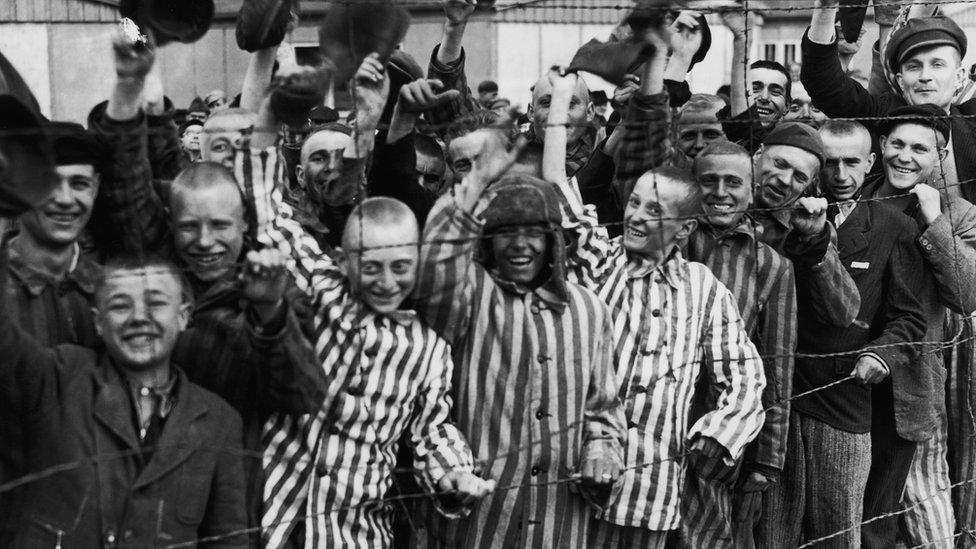
This photo shows prisoners of the Dachau concentration camp cheering at the American soldiers who had come to free them. However, many soldiers spoke of the horrific scenes they witnessed on entering the camps
People who went in to liberate the camps have spoken of the horrific scenes that they encountered.
Many of those who were freed from the camps died even after the liberations as they were so ill from how they'd been treated.
Life would be extremely difficult even after the end of the war.
Many survivors found strangers living in their homes or were unable to find somewhere they could live.
Countries did not want to welcome such a great number of refugees.
Were Nazis punished for the Holocaust?
On 11 December 1946, the General Assembly of the United Nations ruled that genocide would be a crime under international law.
Adolf Hitler killed himself before the end of the war so it was not possible to bring him to justice.
In the years since World War Two, Nazi figures have been prosecuted for their crimes.
Even as recently as in July 2015, a German court convicted 94-year-old Oskar Groening, who was a guard at Auschwitz, for his crimes.
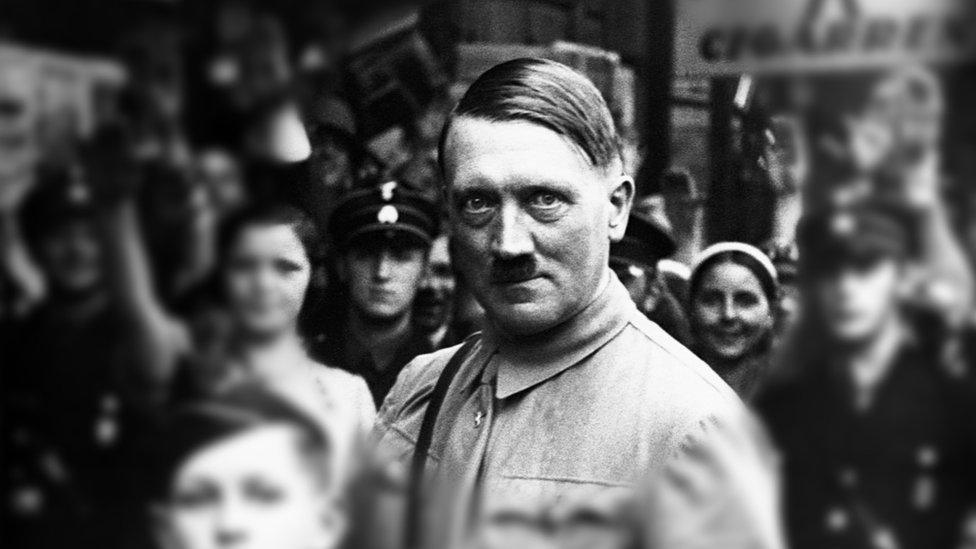
It wasn't possible to bring Adolf Hitler to justice for his crimes because he killed himself before the end of World War Two
But it has not been possible to bring everyone to justice.
Many Nazis went into hiding after the war and were never found, or have since died before their crimes could be found out.
How do we remember the Holocaust?
Now, the enormity of the Holocaust is recognised across the world and it serves as an example of the horrors of genocide and how certain behaviours can lead to it happening.
But the Holocaust is not the only genocide that has happened in history. In Cambodia, Rwanda, Bosnia and Darfur millions of people have been killed because of who they are.
Every year on 27 January, people in the UK mark Holocaust Memorial Day.
It is held on this date because this is when the largest Nazi concentration camp, Auschwitz-Birkenau, was liberated by soldiers of the Soviet Army in 1945.
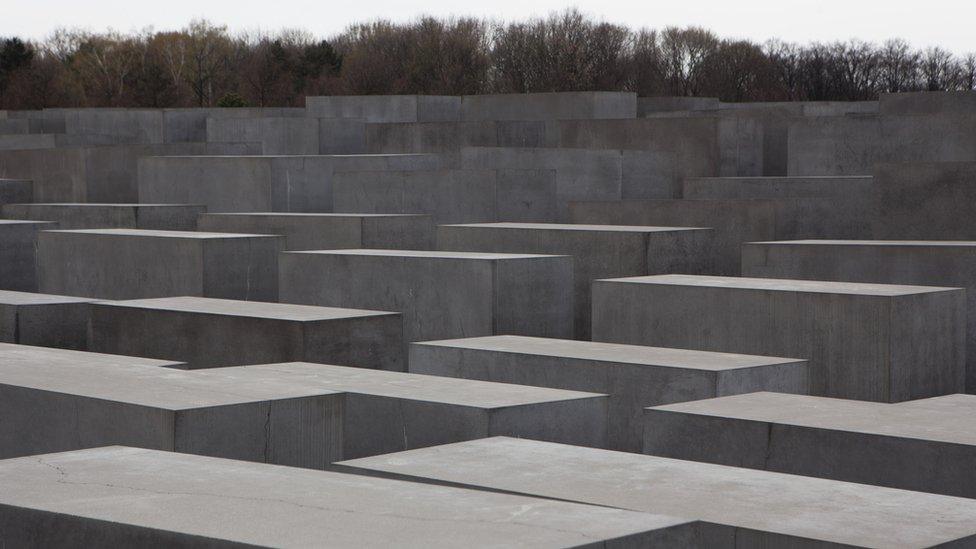
A famous monument in Berlin called the Memorial to the Murdered Jews of Europe allows visitors to take a moment to reflect on the Holocaust
Holocaust Memorial Day is not only to remember the millions of victims of the Holocaust, but also those who have been killed in other genocides around the world.
It highlights how important it is not to exclude people or spread messages of hate.
The Holocaust Memorial Day Trust explains how it is a day to "work together to create a safer, better future".
With thanks to the Holocaust Educational Trust
- Published29 August 2022

- Published27 January 2023

- Published15 October 2020
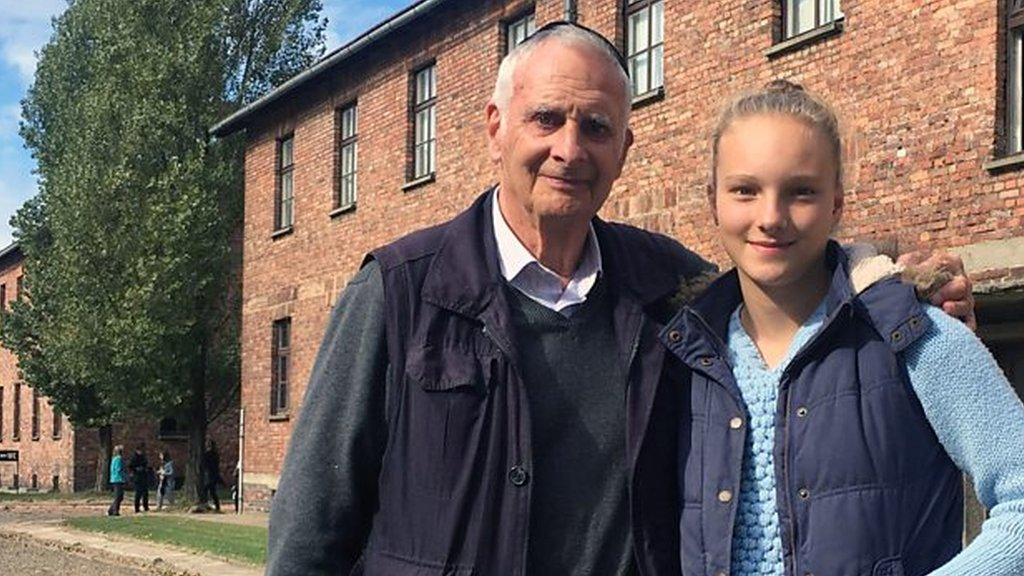
- Published24 January 2019
